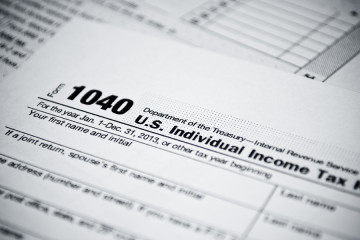High Earners Are Going to Hate These Retirement Proposals

published Jun 9th 2016, 12:32 pm, by Suzanne Woolley
(Bloomberg) —
For the past two years, a commission made up of 19 high-profile people from the academic, political, business, and investment worlds has been busy devising a bipartisan plan to strengthen the retirement security and personal savings of Americans. The result, a comprehensive 146-page report from the Bipartisan Policy Center packed with ideas, came out today. A lot of high earners are going to hate it.
One of the report’s many proposals would raise the taxable level of Social Security earnings to $195,000 from the current $118,500 by 2020, part of a broader plan to “renew the promise of a comfortable retirement, across the income spectrum, for current and future generations of Americans.”
The report also includes revamps of everything from 401(k) plans to reverse mortgages to tax credits that encourage savings. And it recommends that any company with at least 50 employees that doesn’t offer a retirement plan meeting certain standards have to enroll workers in a new type of savings plan proposed in the report or in an enhanced myRA that myRA the report envisions.
“Growing inequality has made retirement increasingly available to only a few. We need a federal plan that serves everyone,” one of the commission members, author and New School economist Teresa Ghilarducci, said in a statement. “With 27 states actively pursuing retirement reform, these leaders have made it clear that the political will for change exists.”
The report addresses an urgent need. Nearly half of respondents in the Federal Reserve’s 2014 household survey said they wouldn’t even be able to cover a $400 financial emergency without selling something or borrowing money, never mind saving for retirement. Employer defined-benefit retirement programs have largely been replaced by defined-contribution plans such as 401(k)s that employees have to finance and manage mostly by themselves, and only half of private-sector workers with access to these plans use them.
That makes Social Security the main source of retirement income for many older Americans. And as anyone who has given retirement a passing thought knows, the program has big challenges.
If the BPC report’s recommended policies are enacted, “retirement savings for middle-class Americans would be increased by about 50 percent by 2065” and old-age poverty reduced by one-third from today’s levels, the commission’s co-chairman, Kent Conrad, a former Democratic U.S. senator from North Dakota, said in a press briefing. Here are some of the proposals that would affect high-income workers.
Limit tax-deductibility of mortgage interest
The federal tax deduction for mortgage interest payments, a longtime real estate industry sacred cow, usually applies to taxpayers who itemize, the report notes. These are typically wealthier taxpayers, but the report’s authors are concerned about Americans’ debt, including the increasing level of mortgage debt among older people. In general, they add, borrowing against the equity in your home before retirement “is likely a poor choice for many homeowners, as doing so can lead to greater debt and related expenses during retirement, when income is typically lower.” The recommendation: Tax deductions “should no longer apply to mortgage interest when home equity decreases, such as through HELOCS [home equity lines of credit], mortgage debt for second homes, second mortgages that reduce home equity, and refinancing transactions.” That would give homeowners more incentive to store up home equity to draw on in retirement and boost retirement security for the many households that are “home-rich, cash poor,” the authors say.
Shrink Social Security benefits for the wealthy
Along with taxing more income for Social Security, more taxation of Social Security benefits, and a 0.5 percent hike in the employee (and employer) payroll tax, spousal benefits would be capped. “Today, with a significant majority of working-age women working outside the home, wives of men with high incomes are less likely to work than women in less-affluent households,” the report says. So “the spousal benefit mostly benefits certain high-income families who can afford to have only one earner, and, in this way, undermines the progressivity of Social Security.”
The way it works now, as long as a marriage has lasted at least 10 years, a married or divorced person can draw on his or her own benefits or the spouse’s benefits, whichever is higher. The recommendation is to cap the spousal benefit at a level “equal to the spousal benefit received by someone married to a worker in the 75th percentile of the earnings distribution.” In 2022, the new maximum would be $843 a month. Under current rules, the maximum monthly benefit in 2016 is $2,639, and the maximum spousal benefit based on that is $1,320, according to the Social Security press office.
Cap total assets in tax-advantaged savings accounts
The Romney Plan, if you will. Few people are lucky (or churlish) enough to be able to complain about the report’s recommendation to limit aggregated assets in tax-advantaged accounts to $10 million. Right now, there’s no limit—hence, former presidential candidate Mitt Romney’s famous IRA, which he reported in the 2012 election cycle as holding assets between $20 million and $102 million. The Government Accountability Office “estimates that 314 taxpayers have more than $25 million in IRAs, 791 have between $10 million and $25 million in IRAs, and 7,952 have between $5 million and $10 million in IRAs,” according to the report. That might result from investing IRA assets in shares of an early-stage startup before it goes public, the report notes. If the company does go public and an investor reaps large returns, using a Roth IRA “would result in a very large tax savings, disproportionately favoring wealthier individuals who may use their accounts as a tax shelter, rather than to fund consumption needs in retirement,” the authors say.
Close the ‘stretch’ IRA estate-planning loophole
Non-spousal beneficiaries such as children and grandchildren are able to keep money they inherited in IRAs and defined-contribution plans in tax-advantaged accounts for decades, the report notes. It recommends that those assets be distributed over no more than five years.
To contact the author of this story: Suzanne Woolley in New York at swoolley2@bloomberg.net To contact the editor responsible for this story: Peter Jeffrey at pjeffrey@bloomberg.net
copyright
© 2016 Bloomberg L.P







No Comment